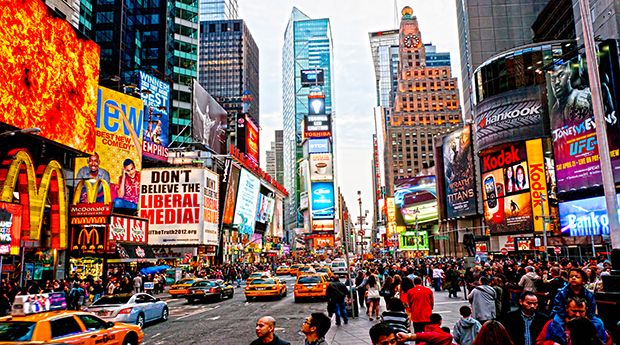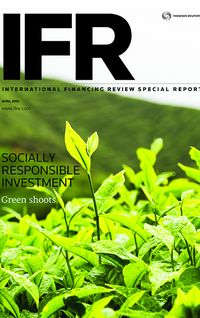As the world’s leaders gathered in New York in April to sign the Paris climate deal, they will no doubt have been content to use the city’s public transport system to travel to the UN General Assembly, safe in the knowledge that the Mass Transit Authority is doing its bit for the green agenda.
The need to finance the development of sustainable transport infrastructure is undeniable as the world attempts to move itself towards a low-carbon environment.
The transport sector is the second largest contributor to global greenhouse gas emissions after electricity generation, according to Nationally Appropriate Mitigation Actions for Transport, and is already contributing over 27% of energy-related CO2 emissions.
It is also the fastest growing sector in terms of greenhouse gas emissions. Without improving sustainable mobility, CO2 emissions from the transport sector are projected to rise to a 70% contribution to the total by 2050. Something needs to be done.
In December of 2015, the world’s leaders gathered in Paris to consolidate plans for a more sustainable future, one that curbs global warming this century to below 2ºC above pre-industrial levels. There was further agreement to try to limit the temperature rise to a target of 1.5ºC in order to mitigate the impacts of climate change.
It is a very challenging task, and building sustainable transport infrastructure will play a significant role in achieving the climate change targets as outlined in Paris at the 21st session of the Conference to the Parties to the United Nations Framework Convention on Climate Change (COP21).
The size of the required investment to achieve the COP21 aims is huge. According to the International Energy Agency (IEA), some US$15.7trn in additional transport investment is required between now and 2050 to fulfil a rapid decarbonisation programme that meets the 2ºC target. It forms part of an overall bill for building sustainable infrastructure that could reach as high as US$90trn by as early as 2030, according to the New Climate Economy report of 2015.
Current investment flows into infrastructure of around US$3trn per year, according to management consultants McKinsey, are insufficient to meet the kind of figure required to meet the targets. The ongoing pressure on public finances means that government spending will be unable to cover the costs, so, in order to fill the gap between the demand for investment and the supply of funds, the market needs to mobilise assets under management from the private sector.
Leveraging the debt capital markets, where there is between US$90trn and US$100trn of assets looking to be lent, for sustainable transport infrastructure development has significant potential in achieving part of the transformation process.
Indeed, bond markets already play an important role in raising funds for the transport sector. The Climate Bonds Initiative (CBI) estimates that there are roughly US$600bn of bonds outstanding where proceeds are clearly tied to assets and projects that meet the climate agenda. But they do not necessarily conform to a set of standards where the use of proceeds is sufficiently transparent to the increasing community of ethically leaning investors.
Bonds labelled as green under the CBIs’ Climate Bonds Standards address those issues of transparency – both pre and post-issuance, which gives investors the confidence that funds are being used specifically to deliver climate change. The certification ensures that funds are clearly earmarked for climate-related projects and that there is measurable follow-up to also reveal the impact from that bond. There are about US$100bn of those bonds currently outstanding, according to Sean Kidney, CEO and co-founder of CBI.
Transport of delight
In January 2016, CBI released its latest criteria specifically targeting issuance related to low-carbon transport. These more detailed criteria outline the type of transport projects applicable for certification. They are defined as public passenger transport, private light-duty and heavy goods vehicles that are electric, hybrid or alternative fuel and dedicated freight railway lines and supporting infrastructure.
“We’ve got to make the criteria granular,” said Sean Kidney. “We need to make sure that investors really understand where the money is going.”
Quick to take advantage of this new development in the Green bonds arena was the Mass Transit Authority of New York. The MTA is responsible for developing and implementing a unified public mass transport system for the New York metropolitan area. It is the largest regional public transportation provider in the Western hemisphere, serving a region spread over 5,000 square miles and home to more than 14 million people. It manages the subway routes, commuter rail routes, rapid transit and buses.
A frequent visitor to the US municipal market, it was not necessary for the MTA to try anything different from normal in order to raise funds but, nevertheless, the transport authority decided to try its hand at the Green bond market for its issue in February.
“We’d been watching the Green bond market develop for some time,” said Pat McCoy, director of finance at the MTA. “With the bulk of our ridership on electrified subway or commuter rail, we are a natural fit for the green market.
“The Green bond market recognises the efforts of institutions in decarbonising and the evolution of mindsets. New York City is very efficient in comparison to other large cities in the US, and MTA’s role in that is substantial. We are green and we’d like to get some credit for it.”
Mass transit not only dramatically reduces a commuter’s carbon footprint, it also facilitates a larger shift away from automobile use, contributing to the development of smarter cities. In 2010, the MTA said that, while it produced 2.1 million metric tons of greenhouse gases, its transit operations reduced the overall carbon emissions of the region by 17 million metric tons.
Not only is the borrower mitigating the growth of carbon emissions in New York, its capital markets efforts are also seen as contributing to the development of the Green bond sector. For that market to grow, it needs a large, well-known issuer to blaze a trail, and the MTA ticked a number of boxes with its offering. It was the borrower’s first Green bond, it was the first Green bond to be launched under the low-carbon transport criteria, and it became the largest Green bond in the municipal market.
The MTA came to market with a US$500m bond that was later upsized to US$782.52m over a series of tranches with maturities ranging from one to 20 years, paying tax-exempt coupons of between 2% and 5%.
“The MTA brought the spotlight onto green infrastructure,” said Vikram Puppala of Sustainalytics, a research and analysis firm that supports investors with incorporating ESG and corporate governance factors into their investment processes. “It provided the roadmap for others to follow.” Sustainalytics acted as the independent verifier on the MTA deal.
The decision to launch under the CBI’s low-carbon transport criteria was made following a process of research.
“We looked at what other issuers had done. Those adhering to the Green Bond Principles, some with outside verification and some without,” said McCoy. “We looked at the CBI standards – which are very much harmonious with the Green Bond Principles, and decided to go with the Low Carbon Transport criteria to add that credibility to the deal.”
As a regular issuer in the market, investors are broadly aware of the credit, but by launching a Green bond, the borrower was able to widen its appeal to more socially aware asset managers – both on a retail and institutional scale. It even undertook an extended marketing effort in order to attract retail buyers.
“Our goal was to broaden the investor base and, anecdotally, we’ve done it,” said McCoy. “The feedback we received suggests that some investors came into the deal because of its green credentials.”
And the benefits of expanding the investor base and making a splash in the sustainability market outweighed the additional costs of breaking into that arena. Currently, Green bonds command no premium in the market over straight, unlabelled bonds. But as climate change becomes more of a pressing concern and governments, corporates and investors alike align resources towards ethical, social and sustainable efforts, that could change.
Ticket cost
“There are costs associated with launching any bond,” said McCoy. “The costs of gaining certification to the low-carbon transport criteria and third party verification from Sustainalytics were modest. This forms part of the process to our ongoing strategy to develop a presence in the Green bond market.”
Proceeds from the bond sale go towards funding expenditure on the transport authority’s electrified rail assets and associated infrastructure, which form part of the MTS’s US$34bn 2010–2014 capital programme.
Sustainalytics has verified a variety of projects that MTA has in its 2010–2014 Capital Plan.
Over US$11bn of that total plan meets the CBI low-carbon transport criteria although, arguably, there are other parts of the MTA’s operation that contribute to a reduction in emissions.
“Much of the public transportation system is at or close to 100 years old,” said Projjal Dutta, MTA’s director of sustainability. “We have been deeply influenced by the impact of climate change, and building in climate resiliency is a key element in integrating sustainability into the ongoing and planned capital programmes projects.”
New sources of capital will be needed to resolve the problems of ageing infrastructure, mitigating the extremes of climate change and reducing carbon emissions, and so the borrower is keen to issue more bonds into the green investor base.
“We plan to borrow around US$2bn a year,” said McCoy. “The bulk of that will be through Green bonds.”
To see the digital version of this special report, please click here
To purchase printed copies or a PDF of this report, please email gloria.balbastro@thomsonreuters.com



